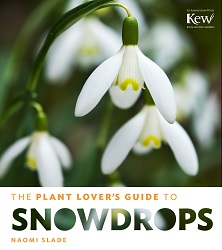
I planted some Galanthus 'Flore Pleno' three years ago. For all three years, the foliage comes up, buds form.....and then nothing. The buds swell and begin to color, but they never 'drop,' and will remain on the plants for up to two months without change. They never open, but very gradually become desiccated. They do not turn brown like daffodils with bud blast, and I see no signs of fungal disease. The foliage appears totally healthy. They are planted in a north facing bed, soil is medium-heavy but not waterlogged. I have done research but have found no explanation. Any thoughts are appreciated.
A general
article by Christopher Lloyd on snowdrops in The Guardian (2001) makes a brief mention of heat causing bulbs to go blind (i.e., not flower), but this is said in the context of growing them indoors. Lloyd also mentions that
Galanthus bulbs "are at their happiest in a clay/humus-rich soil that will be damp in winter and spring and dry during the summer." They do not thrive in soil which is too rich or too acidic.
Another possibility is that you may need to divide them. Seattle's Dunn Gardens has a helpful
care sheet for growing snowdrops. Here is an excerpt:
"In the garden snowdrops do best in a partially shaded situation. If you have a very sandy, free-draining soil, amend it with compost. They love damp ground especially in the winter/spring. After the plant has finished flowering, allow the foliage to fully die down on its own. Do NOT cut the foliage off early, nor twist or braid it. Yes it will be ugly, but if planted around later emerging perennials, it won't be so offensive.
"The Narcissus fly is the bane of snowdrops. After flowering, the fly will lay eggs on the foliage. The eggs hatch and the maggots will eat their way down into the bulb, destroying it. We've found that siting this bulb, where it gets afternoon or full shade after flowering, greatly reduces the chances of infestation. There is little in the way of chemical control, and what there is, is nasty.
"To bulk up galanthus, liquid feed after flowering, with a half strength solution of a water-soluble fertilizer, every two weeks, until the foliage has died down completely.
If you notice that the clumps are becoming congested (bulbs are starting to push up out of the ground), divide immediately after flowering."
I recommend Naomi Slade's book,
The Plant Lover's Guide to Snowdrops (Timber Press, 2014). In it, she describes in great detail the Fibonacci series by which snowdrops multiply: some varieties do this quickly, others slowly, in a mathematically governed sequence. The result of this natural system of propagation is that you will eventually have a dense clump of snowdrops that needs splitting up every few years if the bulbs are to have sufficient resources to produce flowers.